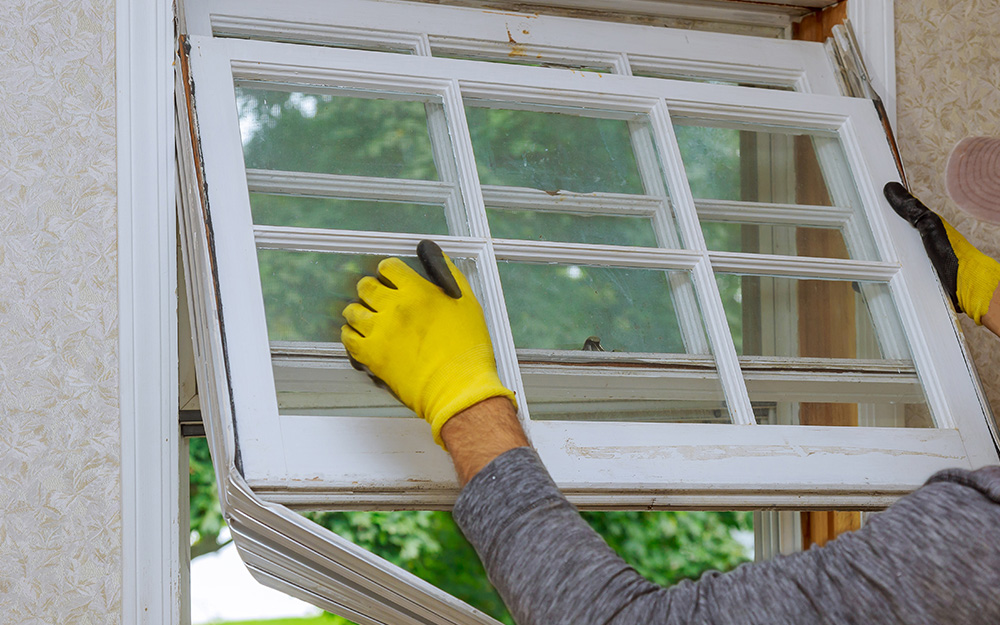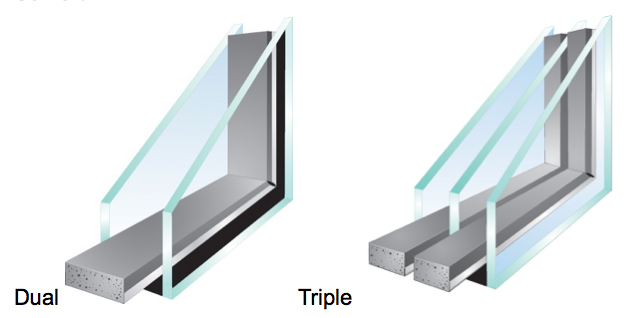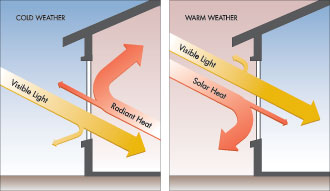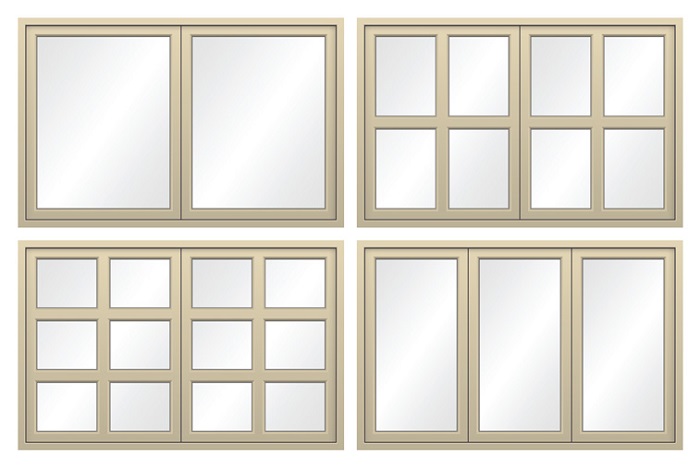Energy-efficient windows are becoming increasingly popular these days because of the energy savings that you can receive, along with various federal, state and local grants that are available which can dramatically reduce the cost.
In this article, we will be reviewing what exactly energy-efficient windows are, how much you can expect to save, how to calculate your potential savings, and smart tricks consumers are using to reduce the costs of installing these new windows.
What Exactly Are Energy Efficient Windows
First, when we are talking about energy-efficient windows, we are talking about those with an Energy Star logo. Energy Star is a joint program by the EPA and Department of Energy to promote energy-efficient products and allow consumers to easily identify these products. Energy Star rated products need to meet strict quality and efficiency guidelines to receive certification.
The Different Parts of Energy Efficient Windows
The Number of Panes
Energy-efficient windows will be either double or triple-paned. The reason they have multiple panes is that space in-between creates insulation which helps reduce the flow of heat. Additionally, windows may also have Argon or Krypton between the panes which helps limit the flow of heat even further.
Argon, for example, has a thermal conductivity of 67% and is more viscous than normal air. This means that the transfer of heat moves more slowly, thus trapping the cold or warm air into your home and stopping cold or warm air from entering it.
Low-E Coating
You will also find that energy-efficient windows have Low-E Coating. This coating minimizes the amount of ultraviolet or infrared light that can pass through the glass without reducing visibility. Low-E Coating can be found on both the outside and the inside of the window. This allows heat to be reflected inside during winter, and heat to be reflected outside during summer.
The Window Frames
Although not necessarily the window, the frames are still incredibly important in determining the efficiency of the window itself. Aluminum is cheap, however, it isn’t very efficient and you are going to see a lot of heat transfer from it. You will want to pair your energy-efficient windows with fiberglass, vinyl, composite or wooden window frames.
How Much Am I Likely To Save With Energy Efficient Windows?
The savings you can expect from energy-efficient windows will greatly depend on many factors including your climate, electricity costs, your energy usage, and the type of windows you currently have. For example, if you have single-paned windows, then you will likely see a large amount of savings after the upgrade.
Energy.gov has found that you can expect to save between $111-$465/year on energy costs depending on your particular situation. Additionally, another benefit of energy-efficient windows is that you recoup about 73% of the window cost as home equity. That means the value of your home will go up by $730 for every $1000 you spend on upgrading your windows. In fact, if you factor in federal or state grants your window upgrades can essential be FREE! This greatly reduces the cost of these windows doesn’t it?!
How Much Do Energy Efficient Windows Cost?
The national average of costs for window installations is $5,391 with a single-window costing between $300 and $1,200 and labor costs being $150 to $800 per window at $40/hr for labor. These numbers can vary, depending on the type of window, and the complexity of its installation.
How Do I Determine If Energy Efficient Windows Are Right For Me?
You’re able to make this calculation with some math and a bit of guesswork. For our example, let’s say that you currently have single-paned windows and that you need six windows in total. The windows each cost $400 and the labor costs for $200 per window. Please keep in mind these numbers will be different for your home.
The total project will come out to (6 windows * $400 per window) + (6 window installations * $200 per installation) = $3,600 total. Now we can recoup about 73% of the window cost as home equity, which is $2,628 (.73 x $3,600). That means the total cost is $3,600 – $2,628 = only $972.
Estimates show that you can reduce your energy usage by roughly 15% per year after upgrading to energy-efficient windows. If you’re spending $150 per month on energy, that comes out to a $22.5/month savings or $270/year.
With $270/year in savings, it will only take you roughly $972 / $270 = 3.6 years to recoup the costs!
The One Simple Trick Consumers Are Using To Reduce Their Window Costs By HALF!
Many smart consumers are using The Window Expert to find various federal, state and local grants to significantly reduce the costs of installing energy-efficient windows. These savings come in the form of tax credits, refunds, or discounts on energy-efficient windows and the labor associated with them.
With these savings, and depending on your circumstances, Uncle Sam could even end up paying over half of the costs of your windows and labor! It’s incredibly easy to see if you qualify:
- Enter your details into The Window Expert so they can find all of federal, state and local discounts available
- You’ll receive the best possible price available (these prices are NOT available to the public)
- Sit back and relax while a professionally insured window vendor installs your brand new windows in a single day
Click Here Now To See If You Qualify >>





